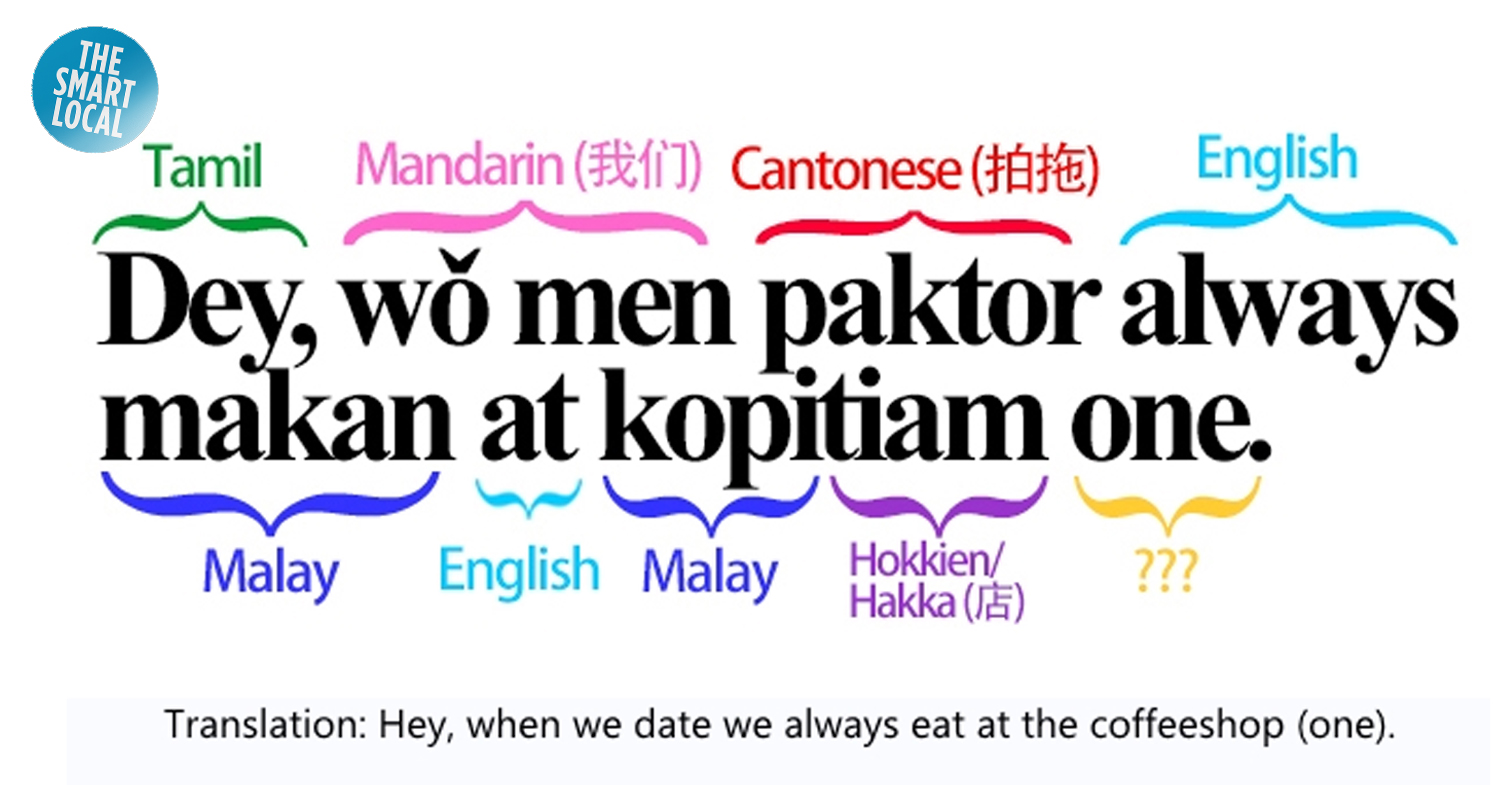Singaporean culture quirks
From day-to-day behaviour to little quirks in the way we talk, some aspects of Singaporean culture which seem strange to foreigners just seem so normal to us. Whether it’s saying “can” to every question or having as many uncles and aunties as the population of the island, these Singaporean culture quirks can be confusing to our non-local friends.
Here’s your cheat sheet to understanding the top 13 common quirks that Singaporeans possess. And for my fellow natives, it’s time to ponder the realisation that – sialah… we ARE kinda weird.
1. Why do you leave tissue packets on the table?
You can’t get more Singaporean after this one – using a tissue packet to chope your table during lunch. For those who aren’t familiar, chope is the Singlish version of “chop”, which in this context, refers to leaving a mark and reserving a table.
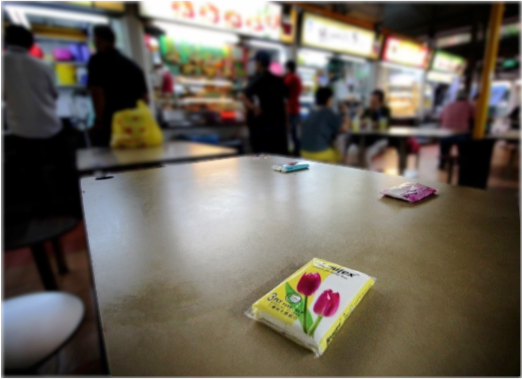
Image credit: Visit Singapore via Facebook
“Why not just ask someone to wait at your table as you order food?”, you may ask. Well, chope-ing isn’t just a sign that the seat’s taken, but it saves the time and hassle of frantically finding a seat with a full tray of food in your hands.
While tissue packets are the OG gear, people have gotten quite creative with their choice of items – we’ve got umbrellas, staff passes, and even a whole handbag with valuables just left unattended. Everyone knows that tissues will always reign, though. They’re easy to carry, and don’t cost you a bomb if someone decides to take them.
2. Why are your go-to drinks in a plastic bag … not a cup?
Carrying drinks in those small, clear dabao plastic bags isn’t an odd sight at all here. While cups and tumblers are definitely an option, there’s something about sipping your morning kopi from a plastic bag that makes it taste better.
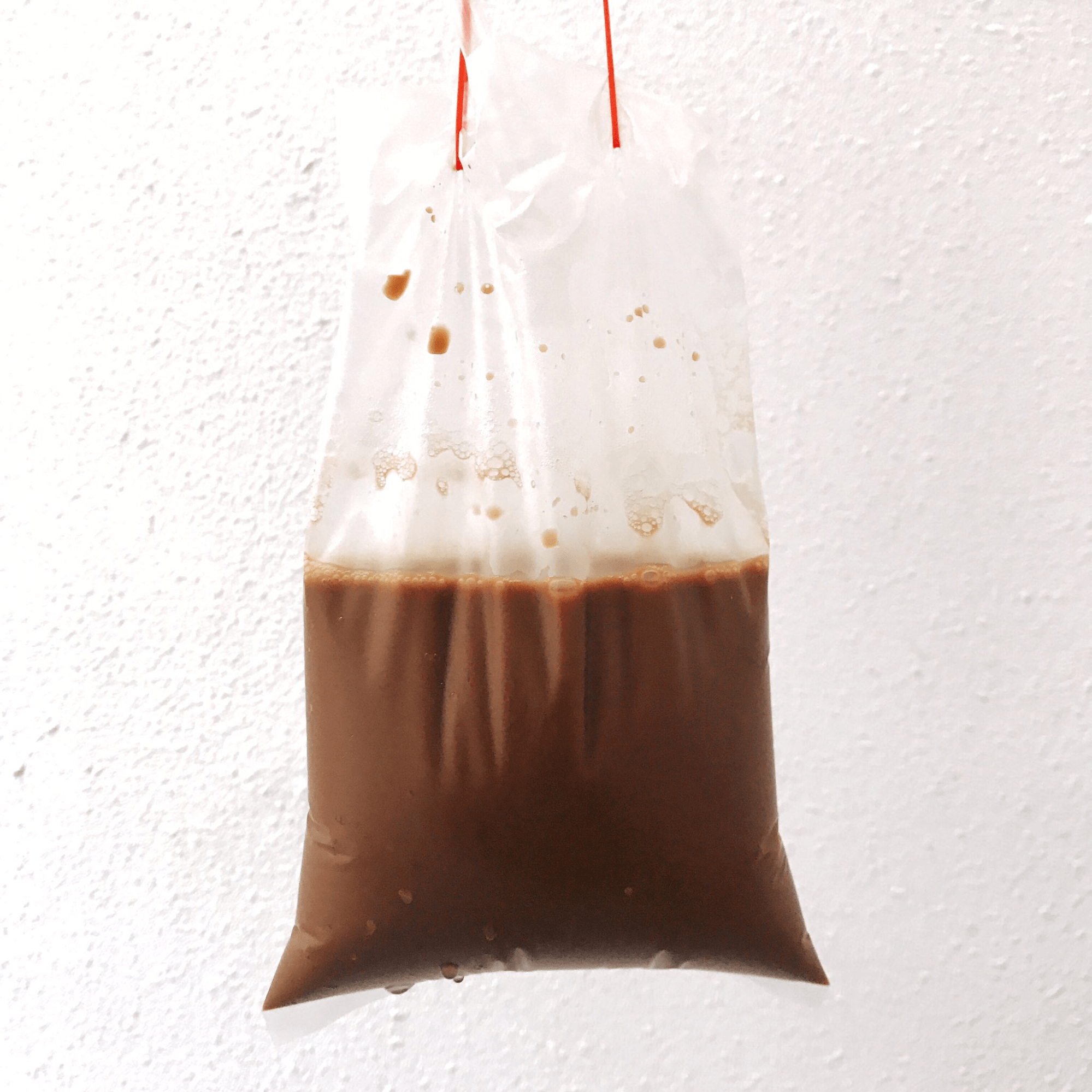 Image credit: @xavierlur via Twitter
Image credit: @xavierlur via Twitter
But if we’re being honest, it’s really the convenience that makes Singaporeans go back to this old-fashioned trend. Drivers can hang their drinks in the car, which makes it easier to take a quick sip while driving on the road. And for commuters on public transport, nothing beats the joy of keeping your hands completely free and hanging your drink in one hand.
Oh, and dabao plastic bags are also about 10-30 cents cheaper than your normal cups, so you get to save some money too.
3. After dinner, you STILL go for supper?
That’s right, in Singapore we’ve got breakfast, lunch, dinner, and of course, supper. Whether you’re out to grab a post-clubbing bite or you’re just looking for a nice, hearty meal, supper is the meal time for you to unleash your cravings.
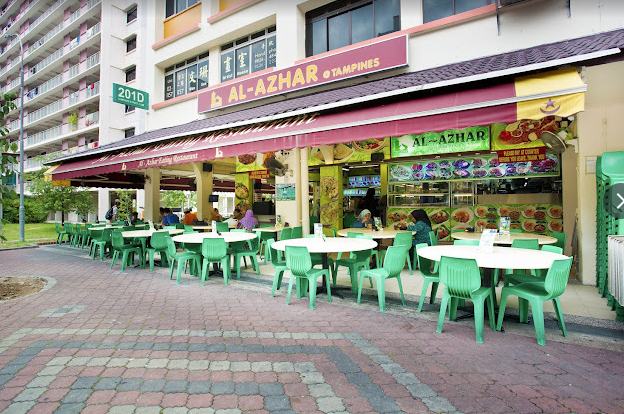
Image credit: The Red Marker SG via Google Maps
While supper is usually in the evening for other countries, ours roughly starts from 10pm and lasts till 3 or 4 in the morning. Imagine a comforting meal with your friends at the 24/7 mamak stall just below your block – it’s the perfect late-night hangout sesh for any Singaporean.
4. How are there 5 different languages in a single sentence?
How is it possible that we can cram a multitude of languages and dialects into one simple sentence?
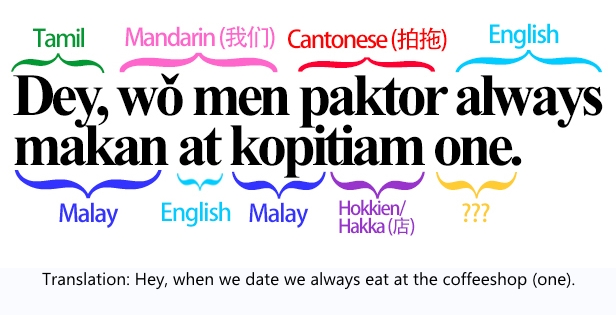
Image credit: Renae Cheng
For a nation with a culture and ethnic mix so diverse, our language is just as colourful. Growing up as a Hakka Chinese girl, I spent recess hanging out with not just my Malay and Indian buddies, but also fellow Chinese kids who were Hokkien, Peranakan and Cantonese. As a result, our ethnic slangs soon rubbed off on each other.
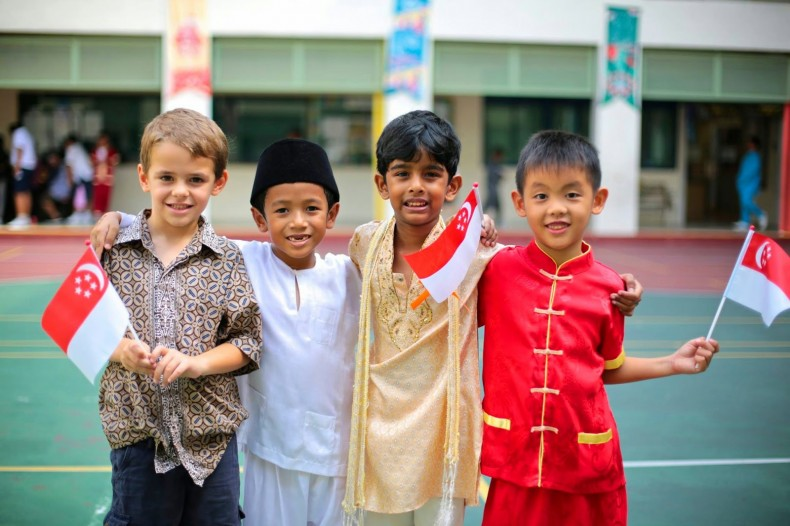
Image credit: IPS Commons
Seeing schoolmates in their national costumes every Racial Harmony Day was something we all looked forward to. Any time an unfamiliar term came up in conversation, we’d ask around for the meaning, and another new word or phrase would be added to our dictionary.
To this very day, I’m still learning bits and pieces of foreign languages that aid in my communication with those around me. There’s no joy quite like coaching your foreign friend handy slangs and hearing them exclaim, “Wah, shiok!” when they dig into that plate of char kway teow during lunch.
5. Why everything must end with “one”, one?
“Two apples please! I want that one.” *points*
“Ok, you want one?” “No, I want TWO!
But I want this one.”
What’s up with our obsession with punctuating our sentences with “one”? Do we love this single digit so much that we’ve turned it into our secret language?
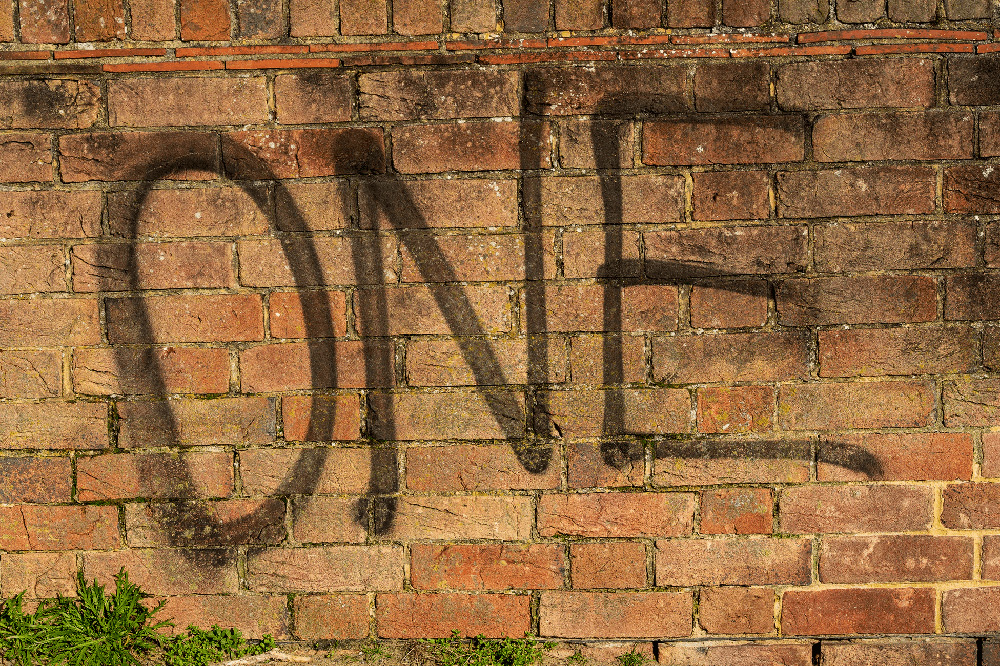 Image credit: Nick Fewings via Unsplash
Image credit: Nick Fewings via Unsplash
In Singlish, “one” acts as a closer in our statements, much like “lah”, “leh” and “lor”.
One theory is that this is the result of a bastardisation from the Mandarin translation of “one” (一个/yi ge). In Mandarin, 个 (ge) is used to refer to ANY particular object, person, or situation, regardless of the actual number (when they say “3”, they say 三个, meaning “three ones”). This habit crept into speaking habits when Mandarin speakers started to converse more in English.
Regardless, if all else fails and the explanations don’t seem plausible, just remember, “It’s like that one”.
6. Why is “can” both the question & the answer to so many things?
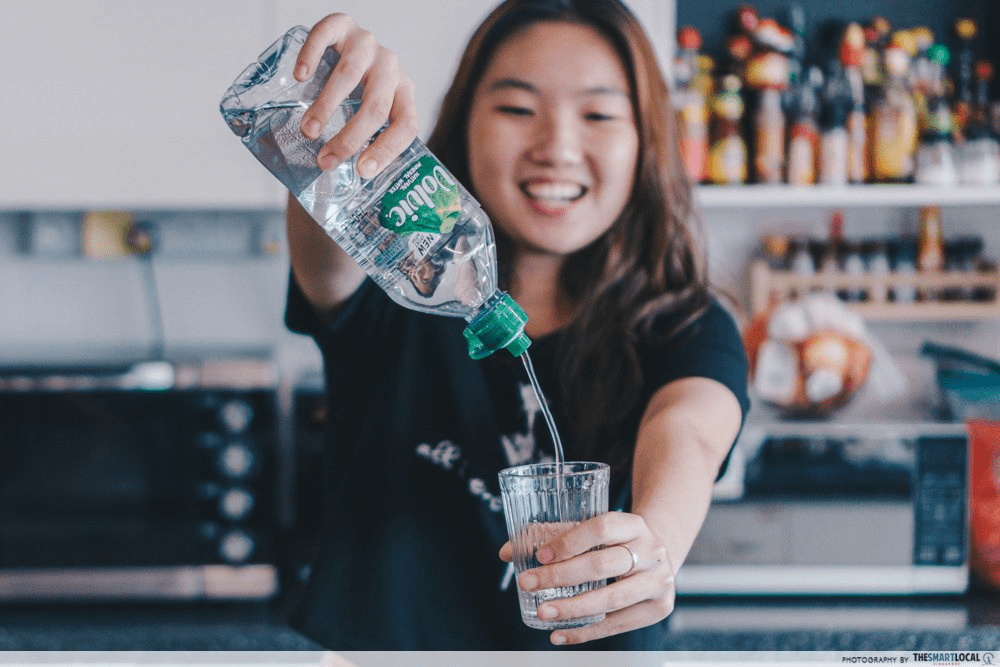 At times you gotta ask yourself, why “can”, and not “bottle”?
At times you gotta ask yourself, why “can”, and not “bottle”?
This simple but oh-so-powerful word means no time and effort goes to waste in our daily interactions. Not only is it a common noun, the fact that it’s also used as both a question and answer means it’s all you’ll ever need to spark conversations.
Situation: Asking someone to meet up tomorrow.
Full length:
“Would you like to meet up with me tomorrow?”
“Why, yes! That would be lovely and I am fully agreeable with that.”
The power of Can:
“Tomorrow meet up. Can?”
“Can.”
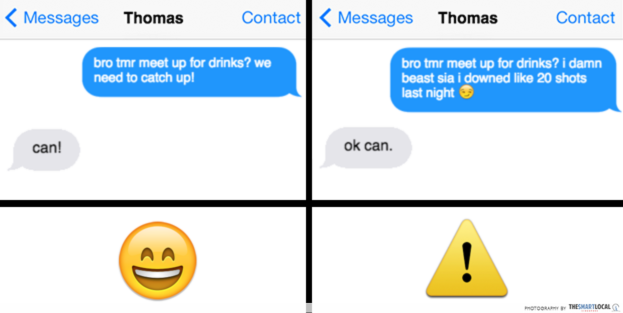
How to know if really can
That said, the word “can” could also be used for passive aggressive subtext. If “can” is preceded by an “ok” or even, *gasp*, a “k”… you’d better run.
7. Why are ALL your meals doused in chilli?
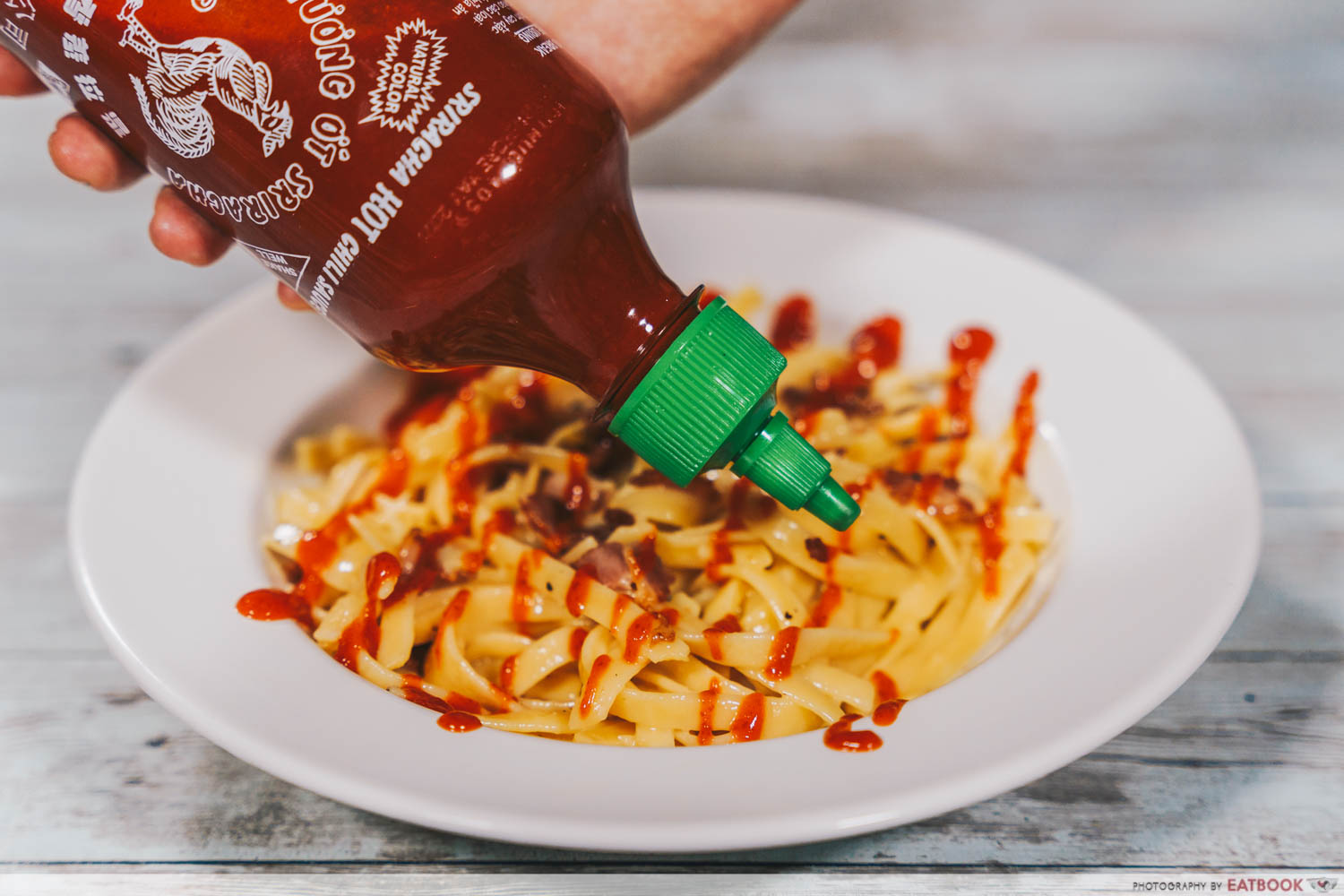
Noodles, rice, even snacks. There is no escape from that familiar flame set to your taste buds. As a nation, there is no denying that we LOVE our chilli. Be it McDonald’s chilli sauce packets, dried chilli powder, or the iconic sambal belacan, we want them all.
And this love for all things spicy isn’t limited to Singaporeans! My European pal who has an embarrassingly weak spice tolerance perseveres, face full of tears, dipping his chicken into that plate of lava-like orange goodness when he eats chicken rice… in the name of chilli. That, my friends, is true bravery.
8. Why are you calling me your “boss”? But thanks for thinking I’m handsome/pretty!
Every time I order cai fan, the lady behind the counter calls me boss, when I am clearly not her employer… Have I perhaps hired a personal cook by accident? Should I be issuing her paychecks from now on?

While shopkeepers and other service staff tend to address you with a simple “sir” or “ma’am” in most countries, the Singaporean style of calling you “boss” is a sign of utmost respect. It also acts as a candid and cordial way to establish contact with you and hopefully open up the channels of lighthearted banter as you proceed with your transaction.
As far as the shuài gē (handsome guy) and měi nǚ (pretty girl) titles go…we hate to break it to ya. But they’re probably just buttering you up to make a purchase. Sorry!
9. Are you all somehow related? Why so many aunties and uncles?
Why is literally everyone older than you either your auntie or uncle? How is it biologically possible that the entire population of Singapore are long-lost relatives to one another?
 Call a young lady “auntie” or a young man “uncle” and suffer the consequences
Call a young lady “auntie” or a young man “uncle” and suffer the consequences
The list of strange ways to address people we don’t know personally continues. When we see someone older than us in public, we call them “auntie” for the ladies and “uncle” for the men. Not that we’re their niece or nephew, it’s simply a way for us to address them without even having to know their name! If anything, it stems from a place of affection and respect.
10. Why do you eat hawker food… even when you’re not at the hawker centre?
We love dining at kopitiams. But why is it that even when we share a meal at cafes, fancy restaurants or even the dessert parlour, we somehow manage to pick the most localised and hawker-style dish on the menu?
Simply put, we just love hawker food – it’s affordable, fuss-free and delicious. When we’re away from our favourite zi char stall, we miss the familiar flavours and aromas wafting through the crowds.
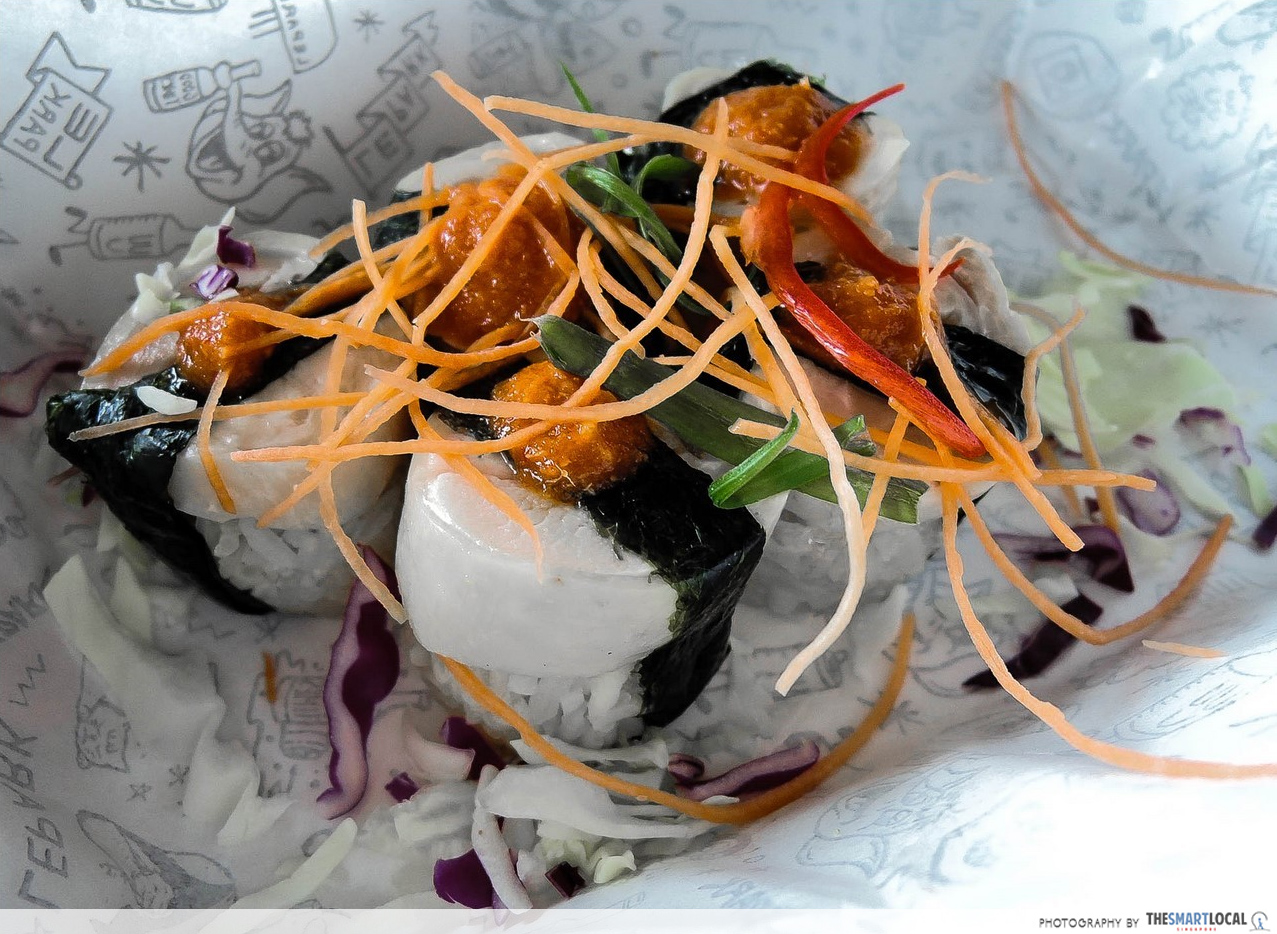 I’m eating sushi! Just kidding, it’s chicken rice. Again. With chilli, of course.
I’m eating sushi! Just kidding, it’s chicken rice. Again. With chilli, of course.
Or perhaps we just need an excuse to pig out on fresh and piping hot otah in an atas (T/N: high class) setting. Like these swanky hawker recreations featured on the menus of hipster cafes and upscale restaurants! And yes, desserts based on hawker favourites are a thing too. Chilli crab-flavoured ice cream, anyone?
11. Why do you love queues so much?
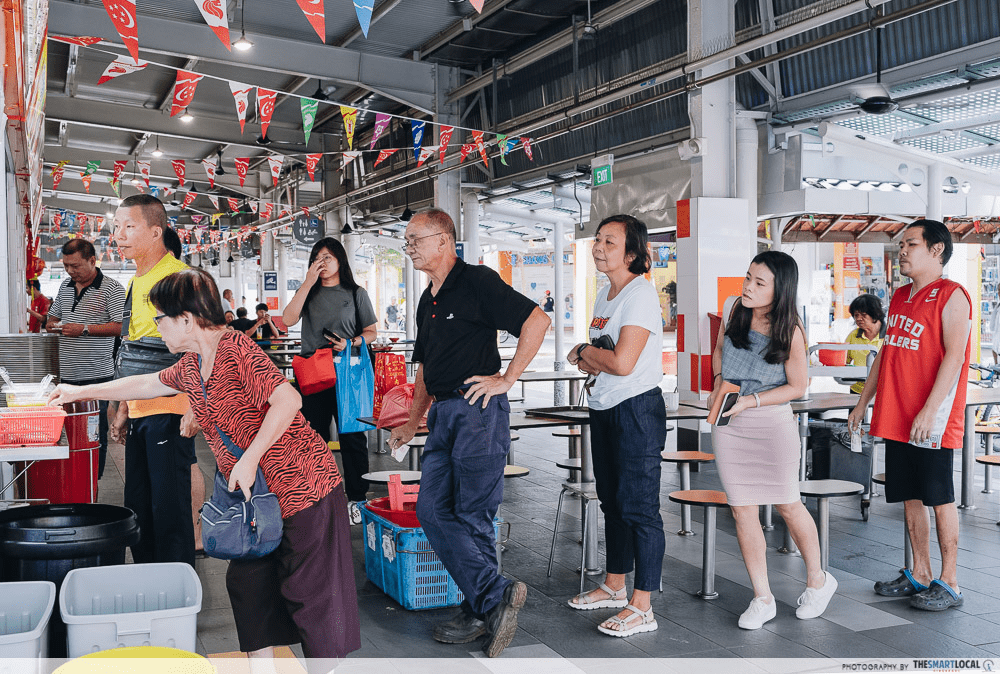
The act of willingly queuing is as Singaporean as it can get. Typically regarded by others as a mind-numbing, time-waster of a chore, locals find great thrill when they chance upon a snaking line of humans. What lies at the finishing end? Is it freebies? Yay! We don’t even care what it is – we need it in our lives.
We chirpily hop in to join queues for tables at a hot new eatery for overhyped food, or at clearance sales to buy cheap clothes and sometimes, McDonald’s merch. Top tip for life: Not sure what food to get when you visit a new hawker centre? Just head to the stall with the longest queue, duh.
12. Wait, what are we rushing for again?
This falls under the category of unexplainable cultural phenomenons that just become ingrained in a society over time. Like how people from certain countries are known to be extraordinarily punctual, courteous, or conscientious.
Fun fact: A study by The British Council showed that Singaporeans are the #1 fastest walkers in the world, followed by people who live in Copenhagen and Madrid.

While I’m usually rushing by default to make it in time for school or work, I find that I’m speed-walking even on the days I can afford to travel at a leisurely pace. With that many people in your midst just whizzing by you to chope a seat on the train, it just feels weird to be shuffling along slowly.
OR…there’s a queue for something right around the corner – we wouldn’t want to miss that!
13. Who eats ice cream with BREAD?
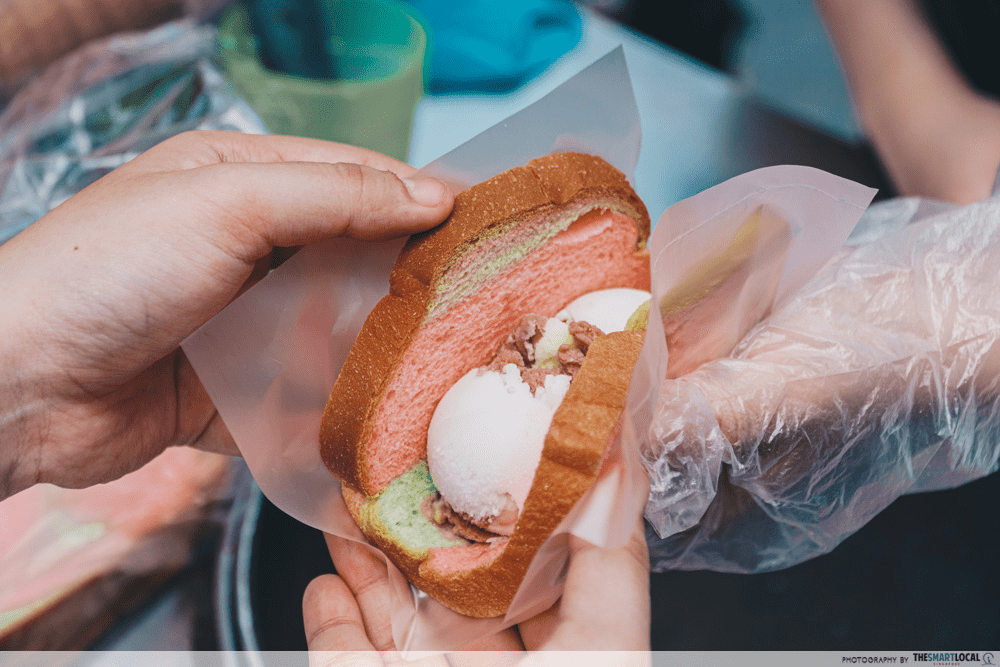
When we say ice cream sandwich, we’re not referring to the hipster cookie versions that cost up to five bucks a pop. We’re talking about the good ol’ scoop of ice cream straight out of your friendly neighbourhood uncle’s cart of frozen treats, sandwiched between the bright and cheery rainbow bread.
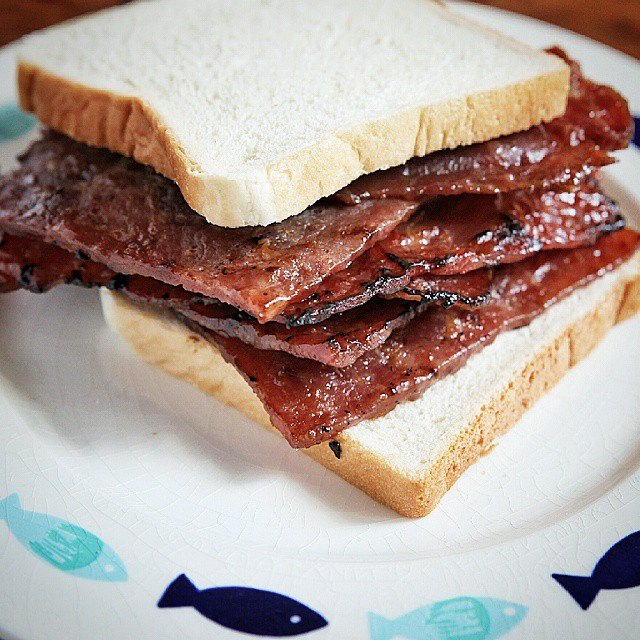
Image credit: Weekender
Oh, the glorious things you could do with bread! Some genius also decided one day that bak kwa sandwiches should be a thing. Shoutout to whoever it is, I’ve enjoyed many a quick and easy meal just by slapping some greasy bak kwa goodness between two fluffy pieces of roti.
Embrace these Singaporean cultural quirks
The next time you catch a friend from a different country low-key judging your Singaporean nature, let them in on the fun. As much as we want to be seen as “not weird”, sometimes we are. So, give them the backstory of how that particular quirk came about, and see them using it in real-life situations like a true-blue Singaporean.
You’ll both revel in the fact that such wonderful knowledge of our culture was passed on, hopefully through generations and across the globe. Hey, it sure beats having to pick up a history textbook!
This post is part of an initiative to promote better understanding between Singaporeans and foreigners.
Cover image adapted from: Renae Cheng
Originally published on 11th May 2016 by Renae Cheng. Last updated by Iffah Nabilah Norhisham on 11th August 2023.
